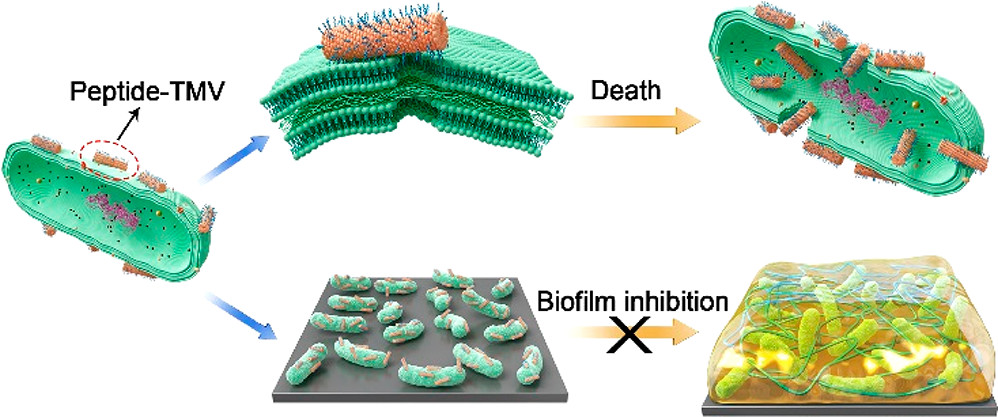
Chinese scientists have recently exploited a new strategy to enhance peptides' activity against Gram-negative bacteria effectively by conjugating the peptides onto a rod-like virus.
The work, published online in Nano Letters, was conducted by Prof. NIU Zhongwei and Associate Prof. TIAN Ye from the Technical Institute of Physics and Chemistry (TIPC) of the Chinese Academy of Sciences (CAS).
Gram-negative bacteria and infection problems caused are threatening global health. Antibiotic resistance is also a serious worldwide problem. Therefore, antimicrobial peptides, which lead to little antibiotic resistance, are regarded as the most promising alternatives to antibiotics. However, compared with the antibiotics, the efficiencies and minimum inhibitory concentration of existing peptides are lower. The clinical applications of peptides are limited.
In this work, the peptides were "decorated" by conjugating onto one-dimensional rod-like tobacco mosaic virus (TMV). The conjugated peptides could achieve an obvious increased local concentration on the TMV surface. Meanwhile, the interaction area between a rod-like nanoparticle and bacterial cell membrane is becoming larger than the normal area between a spherical nanoparticle and bacterial cell membrane. With the interaction area increased, the destruction to the bacterial cell membrane is stronger.
As a result, the antibacterial ability of the peptides on the generated peptide-conjugated TMV nanoparticles (peptide-TMV) has extremely enhanced and even achieved hundred times level than free peptides.
Besides, the conjugated peptides have obtained the ability to inhibit biofilm formation. Through morphology and gene detection of Escherichia coli (E. coli), the damage to E. coli was caused by the destruction of membrane structure, which led to a high osmotic pressure and the generation of reactive oxygen species.
By experiencing the process, E. coli cell died as the gene expression of biofilm growth was inhibited, and finally biofilm inhibition was achieved.
This work was supported by the National Key R&D Program, the National Natural Science Foundation of China, the Beijing Natural Science Foundation and the Presidential Foundation of TIPC.

Schematic Illustration of the Peptide-TMV inducing Bacteria‘s Death and Inhibiting Biofilm Formation. (Image by NIU et al.)

86-10-68597521 (day)
86-10-68597289 (night)

52 Sanlihe Rd., Xicheng District,
Beijing, China (100864)

